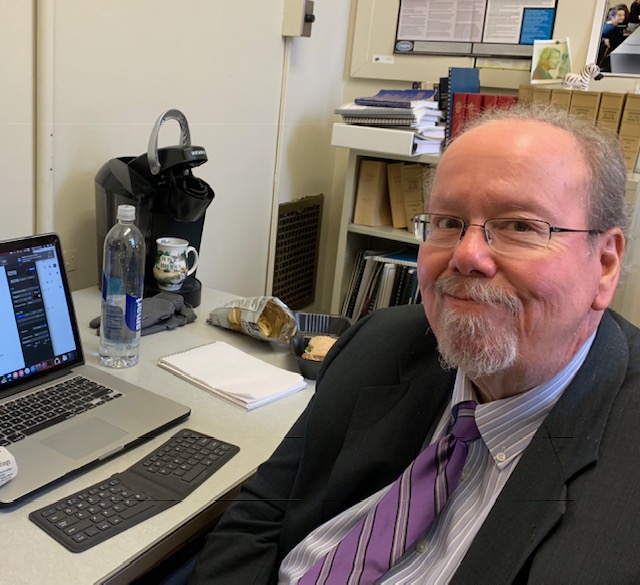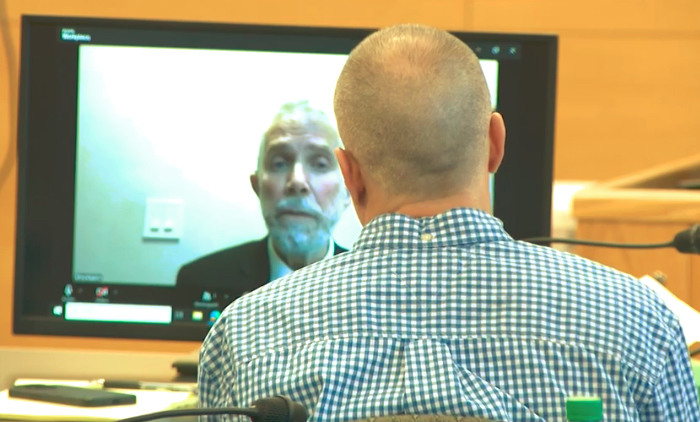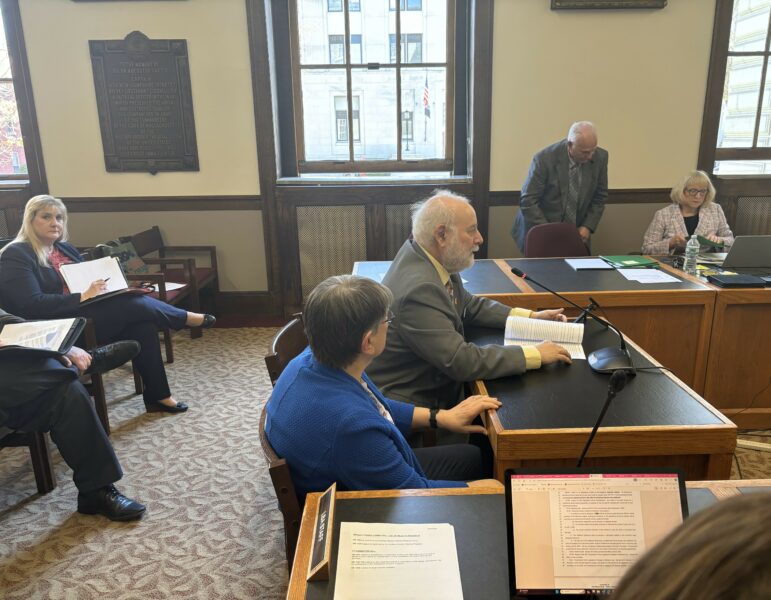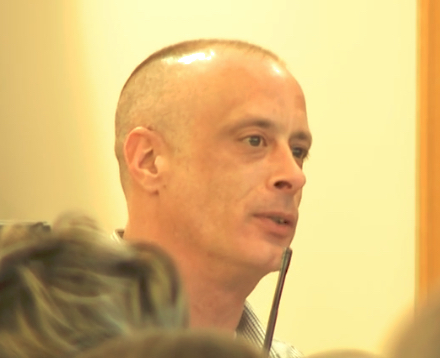
By GARRY
RAYNO, InDepthNH.org
Cora Huter, a senior at Berlin High School, hopes to have a career in nursing, but could be at a disadvantage when she applies to colleges.
Her high school does not have a chemistry teacher this year and Huter and other students are studying chemistry on-line through the Virtual Learning Academy Charter School, which provides on-line courses to many students in the state.
The new superintendent of Berlin schools, Julie King, said while the on-line course is fine, the students will not have laboratory experience in chemistry.
King replaced long-time superintendent Corinne Cascadden who stepped down this year.
Huter’s mother, Amy, was the principal of the Brown Elementary School at one time. The school board decided this year to close the last elementary school and move the students into the high/middle school facility built in 1919.
Berlin, like many North Country schools, has declining school enrollment, but has also lost $1 million in state education aid over the past three years after lawmakers decided to reduce stabilization grants by 4 percent a year.
Lawmakers touted the statewide reduction in student enrollment as one of the reasons to decrease state aid, but many property poor communities like Berlin depend on the money for their schools and now face an additional reduction in state aid unless a budget agreement is reached that returns stabilization grants to their original level, which is what lawmakers passed in the $13.3 million two-year state operating budget Gov. Chris Sununu vetoed.
The stark contrast between communities in crisis due to school funding and those with little difficulty raising the money to provide greater opportunities for their students was apparent at a public hearing last week before House and Senate budget writers, seeking to expose the budget veto’s effects on schools.
At the heart of the discussion was the reduction in stabilization aid.
Grant History
School districts were told in 2011, when the education funding formula was last changed, they would be held harmless, meaning they would receive at least as much state aid as they did the year before the formula changed.
The new formula did away with fiscal disparity aid, which provided additional money to property-poor school districts.
The new formula no longer required property-wealthy districts to send their excess statewide property tax collections to the state to help poorer schools.
The change in formula would have resulted in the state distributing $158 million less in state aid to communities meaning some of the poorest school districts would have suffered the greatest loss in state money, so the stabilization grants were created to soften the blow.
At the time the architects of the new formula, GOP Sens. Jim Rausch of Derry and Nancy Stiles of Hampton, said the grants would be sent to the school districts in perpetuity.
But in 2015, lawmakers decided to scale back the stabilization grants by 4 percent a year and remove a cap on how much growing school districts could receive in adequacy grants.
The changes helped districts like Dover, which successfully sued the state over the cap, Bedford and Windham whose enrollments were growing, but hurt the majority of districts who had declining student attendance.
The changes exacerbated a growing problem for property-poor communities like Berlin, Claremont, Pittsfield, Newport and Franklin. The state had already downshifted teacher retirement costs to local districts during the Great Recession and stopped municipal revenue sharing.
The changes exploded the property tax burden in communities that could least afford it and school budgets — the largest local expense — became battle grounds dividing communities.
Educational Opportunities
The New Hampshire Supreme Court ruled in 1990 that every student has a constitutional right to an “adequate education” and the state has an obligation to pay for it and later said the funding source had to be “proportional and reasonable,” i.e. not widely varying property tax rates.
Unlike Vermont, the Supreme Court never said education had to be equal across the state, only that it had to be adequate. Lawmakers and school districts have disagreed since the ruling what constitutes an adequate education and how much the state should pay for it.
The question is not partisan because both Democrats and Republicans have failed to abide by the court’s ruling and spent more time trying to pass constitutional amendments to remove court jurisdiction over education than solving the problem that currently is as bad as it was when the Claremont education lawsuit was filed, if not worse.
The disparity between property-wealthy school districts and the opportunities they provide their children and property-poor districts is immense.
Educational Atmosphere
Newport Interim Superintendent Brendan Minnihan told the legislative committee one-third of the staff left at the end of the school year, the biggest reason the low pay compared to what more property-rich districts pay.
School Board Chair Linda Wadensten said the school budget is the lowest it has ever been after closing a school, and cutting programs and student necessities like books.
“You can’t get nickels and dimes from a stone. We’ve raked over what a property-poor community can give,” she said. “We give every cent we can to educate our kids because they are our future.”
Berlin Mayor Paul Grenier told of looking his elementary-school-aged grandson in the eyes as he took him to the high school facility built before Grenier’s father was born and wondered if that would be his legacy.
“The time will come when property-poor communities like Berlin will be totally unattractive (for business) investment,” he said. “Is this the legacy we want to leave in New Hampshire, that we take care of kids from rich communities, but if you come from property-poor towns, we throw you in the back of the bus?”
Opportunities
Huter believes her educational opportunities are less than a senior in a more property-wealthy community and wonders what that may mean for her chosen career.
The best and brightest will survive and prosper no matter where they come from, but the average student’s opportunity is more dependent on the zip code where he or she lives than ability under the current system.
But this is not an issue that will be settled in budget negotiations between Democratic leaders and Sununu, although the poorer communities certainly favor the education funding plan and increases in the vetoed budget rather than what the governor proposed the day of the hearing.
Fixing the education funding system will take years not months and may never happen.
Tax System
One person who testified last week, John Morison, Chairman and CEO of Hitchiner Manufacturing in Milford, urged lawmakers to look at overhauling the state’s tax system.
“Listening to the people here today, we have a revenue problem, a revenue distribution problem,” Morison said. “I strongly recommend you look for other forms of revenue to help solve these problems.”
Anyone
attending last week’s hearing had to at least acknowledge there is a serious
problem with state’s education funding system.
There are kids who will not have even adequate opportunities to excel academically because their communities lack the resources and they will not be able to compete for admission to better colleges and universities.
Unfortunate students are delegated to a cycle of poverty that has sometimes entrapped their families for generations just because of where they live.
The current education funding system is not fair or equitable, certainly not proportional, and many of the state’s children are paying the price.
Politicians tout the high quality of the state’s schools based on national test scores, but that sidesteps the problem.
If the state’s students are its future, the funding system needs to be overhauled now before the disparity grows larger and no one wants to open a business in Berlin, Claremont or Newport or any other chronically property-poor community.
The state’s future truly depends on its students — all of them.
Garry Rayno may be reached at garry.rayno@yahoo.com
Distant Dome by veteran journalist Garry Rayno explores a broader perspective on the State House and state happenings for InDepthNH.org. Over his three-decade career, Rayno covered the NH State House for the New Hampshire Union Leader and Foster’s Daily Democrat. During his career, his coverage spanned the news spectrum, from local planning, school and select boards, to national issues such as electric industry deregulation and Presidential primaries. Rayno lives with his wife Carolyn in New London. InDepthNH.org is New Hampshire’s only nonprofit, online news outlet dedicated to holding government accountable and giving voice to marginalized people, places and ideas.





